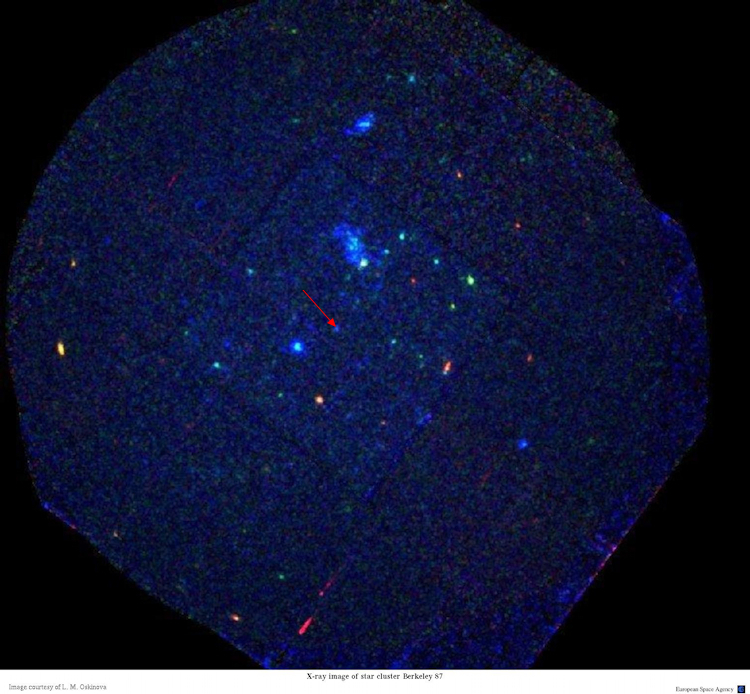
 Credit: L. M. Oskinova, W.-R. Hamann, A.
Feldmeier, R. Ignace, Y-H. Chu and ESA
Credit: L. M. Oskinova, W.-R. Hamann, A.
Feldmeier, R. Ignace, Y-H. Chu and ESA
About to Go Boom
Stars cook up chemicals deep within their cores. All stars start by converting hydrogen into helium; some convert helium into carbon; and rare stars convert carbon into oxygen, silicon and other heavier elements. All the way up to iron, at which point the star goes boom as a supernova. All this activity is hidden within the center of the star, but internal motions can bring material from the core to the surface, and the surface becomes increasingly "polluted" with heavier elements as a star ages. One old star about to explode is WR 142. WR 142 is a Wolf-Rayet star, an evolved form of a very massive star. Such stars explode so powerfully that they are believed to be the progenitors of some Gamma-ray bursts. WR 142 shows an overabundance of oxygen in its spectrum, indicating that the star has cooked up elements up to oxygen in its core, and is well on its way to the iron catastrophe which will trigger the violent death of the star. Above is an image of X-ray emission from WR 142 taken by the XMM-Newton Observatory. WR 142 appears as a very faint but real source (shown by the red arrow) near the center of the field of view. The XMM observations show that the X-rays produced have surprisingly high energy, perhaps indicating the importance of magnetic fields in the outer atmosphere of the star. Though how such star could produce magnetic fields (and energetic X-ray emission) is a puzzle, hopefully one that astronomers can solve before the star disappears for good.
Published: March 22, 2010
<
HEA Dictionary ● Archive
● Search HEAPOW
● Other Languages
● HEAPOW on Facebook
● Download all Images
● Education ● HEAD
>

Each week the HEASARC
brings you new, exciting and beautiful images from X-ray and Gamma ray
astronomy. Check back each week and be sure to check out the HEAPOW archive!
Last modified Tuesday, 27-Feb-2024 10:09:58 EST


